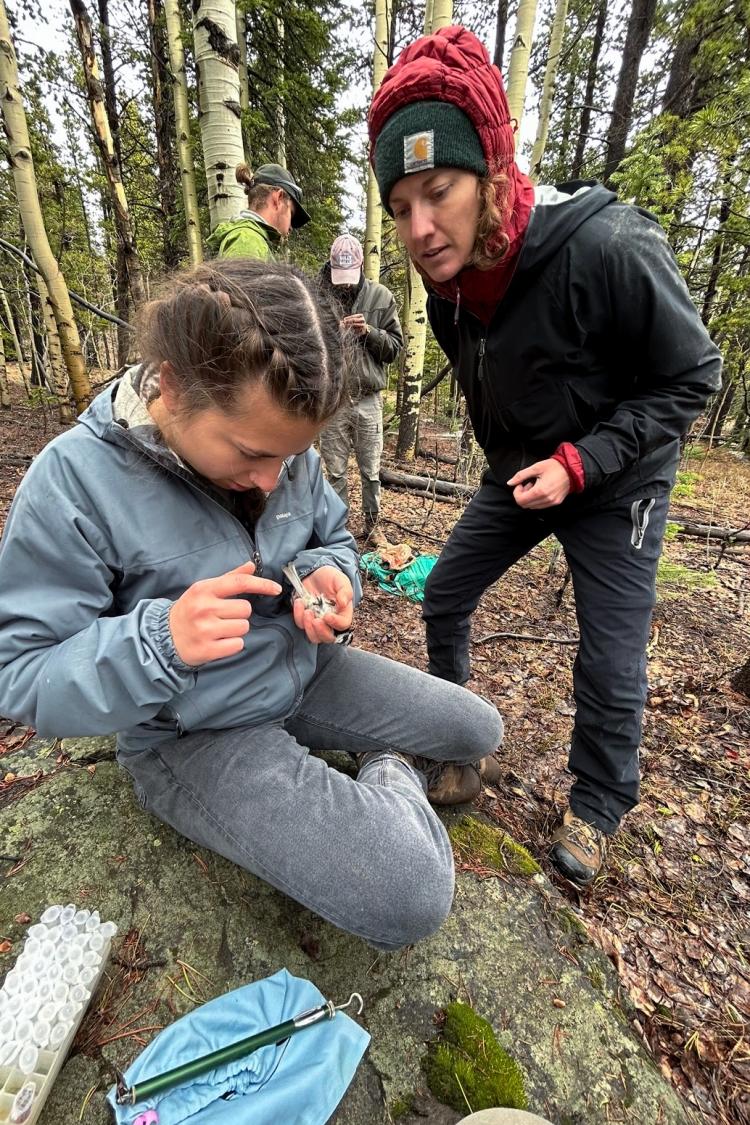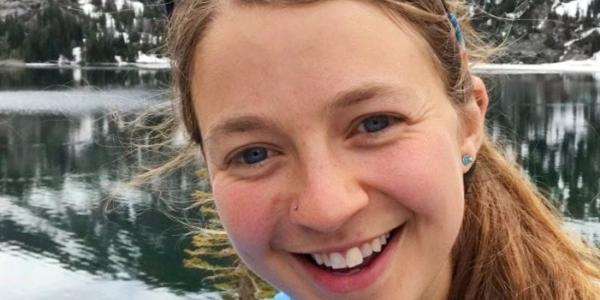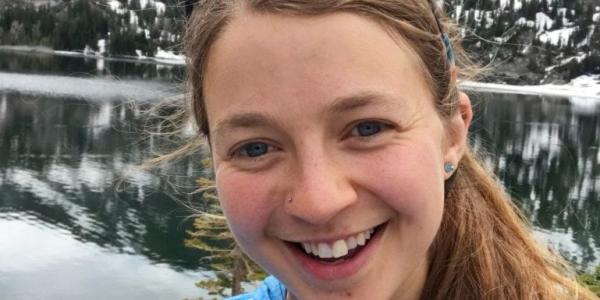
We are proud to announce Sara Padula as the first recipient of the Sarah Crump Graduate Fellowship. The fellowship provides summer support for a graduate student researching Earth or environmental science in Arctic, Antarctic, or alpine regions.
Padula is a first-year PhD student in EBIO, studying Rocky Mountain birds with Scott Taylor’s research group.
We caught up with Sara to ask about her research, her summer, and life as a scientist.
Q: What will you be working on this summer?
A: I am currently working on three projects. I’m a part of the Boulder Chickadee Study, which is what our lab is known for. The study involves the black-capped chickadee and mountain chickadee. We have about 400 nest boxes from Boulder at 5,000 feet up through the Mountain Research Station at 11,500 feet. We regularly monitor these nest boxes to get consistent data on chickadees: what nest stages look like, the timing of hatching, and genetic data.
Everybody interacts with birds, and chickadees are a really common backyard bird. So working on them is a great way to connect with our community.
Our overarching question is assessing the extent of hybridization between the two species. Previous members of my lab found that these two birds will mate with each other and produce offspring. Hybridization between black-capped chickadees and mountain chickadees in the Rocky Mountains is the result of human-mediated change. Us disturbing their environment has caused their habitats to overlap. My lab has found that most birds we sampled have genetic inheritance from both species, and that can have some consequences for the outcomes of nests. Can hybridization also help them adapt?
I also got a $10,000 grant to look at how anthropogenic noise impacts bird songs. Studies have found that in high-noise areas birds will initiate their dawn chorus earlier in the day or sing at higher pitches to avoid masking from anthropogenic noise. I’m working with Boulder OSMP to look at bird songs in high- and low-noise areas.
And lastly there is my dissertation work. This is a winter project that I’ll be starting on in the late summer.
Mountain chickadees and black-capped chickadees cache food. They’ll hide their food throughout their environment when resources are plentiful and, in the winter, the birds will retrieve thousands of food these caches in a single season. To recover all those caches, they need a really good spatial memory.
I mean, they can remember the location of thousands of food caches, and I have trouble remembering where my keys are in the morning
Studies have found that the section of the brain that plays a major role in learning and memory, the hippocampus, becomes enlarged in chickadees in the winter, which is when they utilize their memories the most. And, the more harsh the chickadee’s habitat, the better the spatial memory—and the trait is inheritable.
We use automated feeders to perform memory tests on chickadees in the wild. I will put special tags on the birds’ legs that interact with an antenna on the feeders. When a bird lands on the feeder, the antenna detects the tag and, in turn, opens the feeder door allowing the bird to get a seed. I can program the feeders to only open for specific birds. For our memory tests, I will assign each chickadee to a specific feeder and measure the amount of mistakes (going to the wrong feeder) they make in each trial, which serves as a measure of their spatial memory. Previous work has shown the chickadees quickly learn to visit their assigned feeders with few to no errors.
What I want to do is to compare spatial memories between the two species of chickadees, and also correlate that with their genetics.
I find the memories of chickadees fascinating. I mean, they can remember the location of thousands of food caches, and I have trouble remembering where my keys are in the morning. Can they respond to changing conditions and extreme weather using their spatial memory?


Sara Padula and colleagues capture chickadees for measurement, banding, and release.
Q: What did the Crump Fellowship allow you to do that you couldn’t otherwise?
A: I’m able to go to two conferences this summer, which is really nice. And it gives me more freedom in what I ask for from [her advisor] Scott [Taylor], since he isn’t having to find salary.
The Fellowship has been amazing. I got connected with her [Sarah Crump’s] whole family. Her dad includes me in an email chain, and we talk. He participates in kestrel monitoring, so he sends me pictures of his nestlings, and I send him pictures of my nestlings.

Sara presented her science poster at the Evolution 2023 conference in June 2023. Her poster proposes how to investigate spatial cognition in black-capped chickadees and mountain chickadees.
Q: What do you like to do when you’re not sciencing?
A: I love reading. I only got back into reading when the pandemic happened. This year my goal is to read 40 books, and I’m on track for that. Me and my roommates have our own book club, just the three of us.
I’m on an intramural soccer team. And I’ve always loved running. I’m training for a half marathon in October in Moab.
I also love cooking and baking. I’m the designated chef and baker in my house. I’m vegetarian, and my girlfriend is vegan, so I do a lot of vegan and vegetarian stuff. I think vegan baking tastes better. It’s easier a lot of the time, too.
Learn about the Sarah Crump Graduate Fellowship, which provides summer support for a graduate student researching Earth or environmental science in Arctic, Antarctic, or alpine regions.




